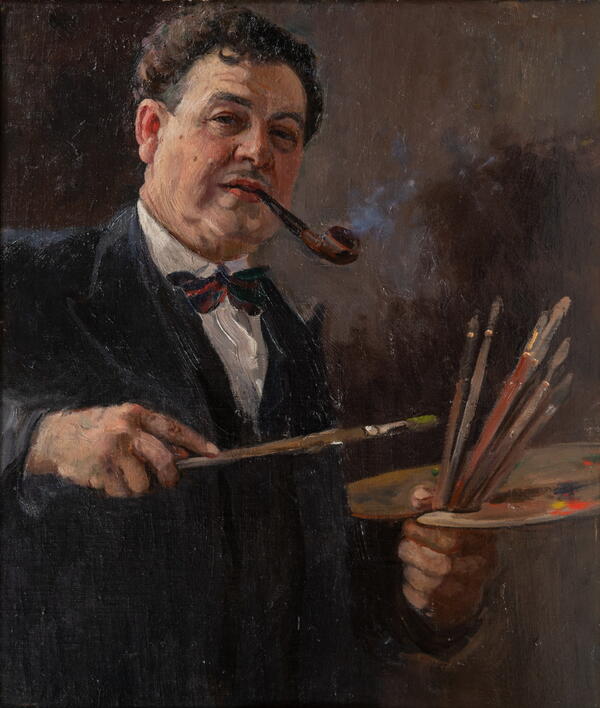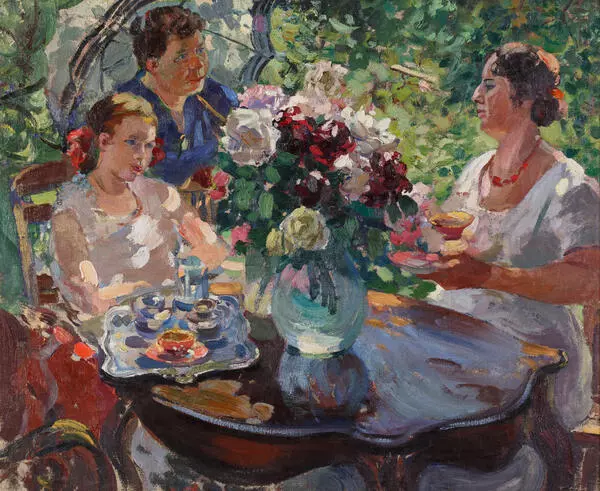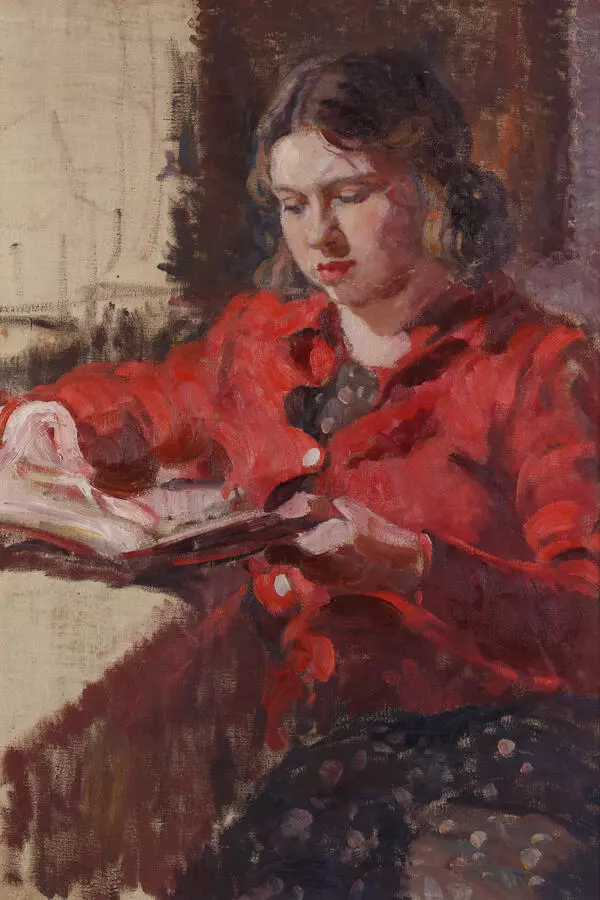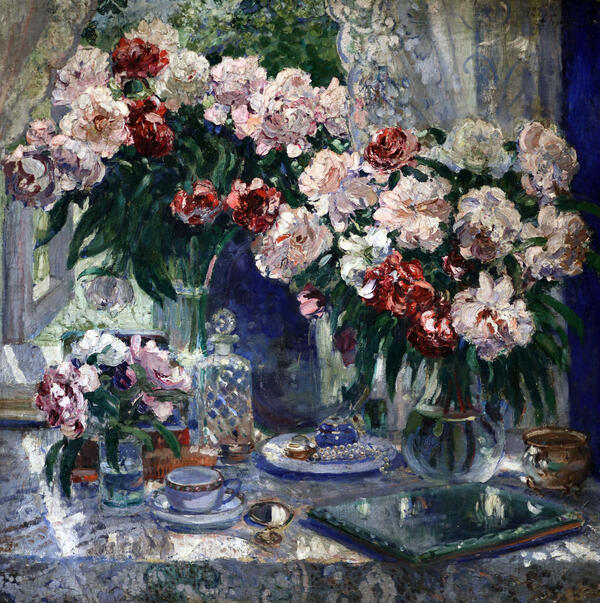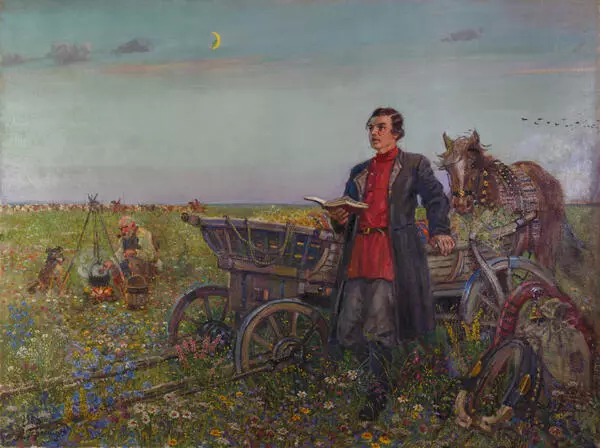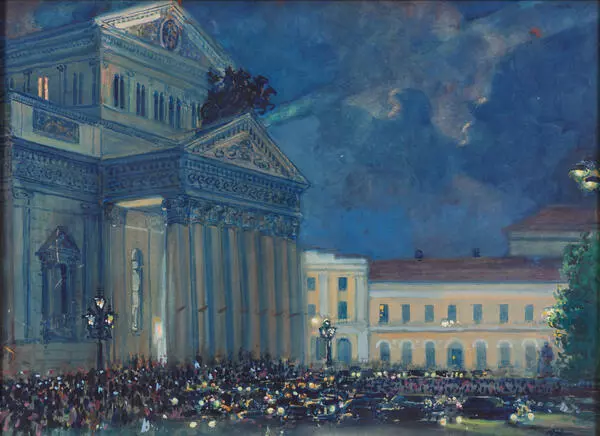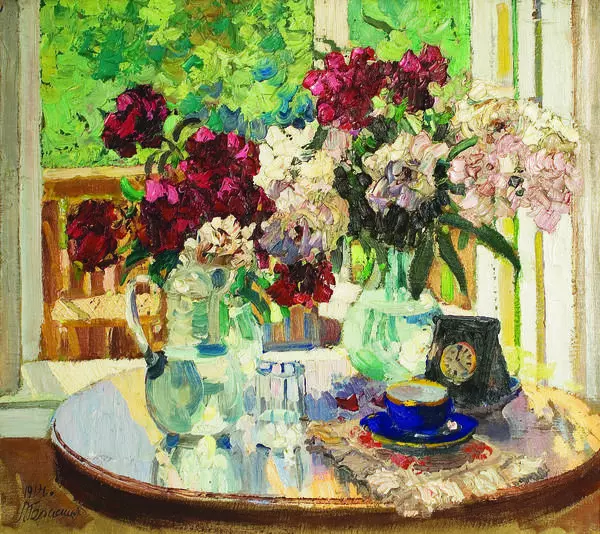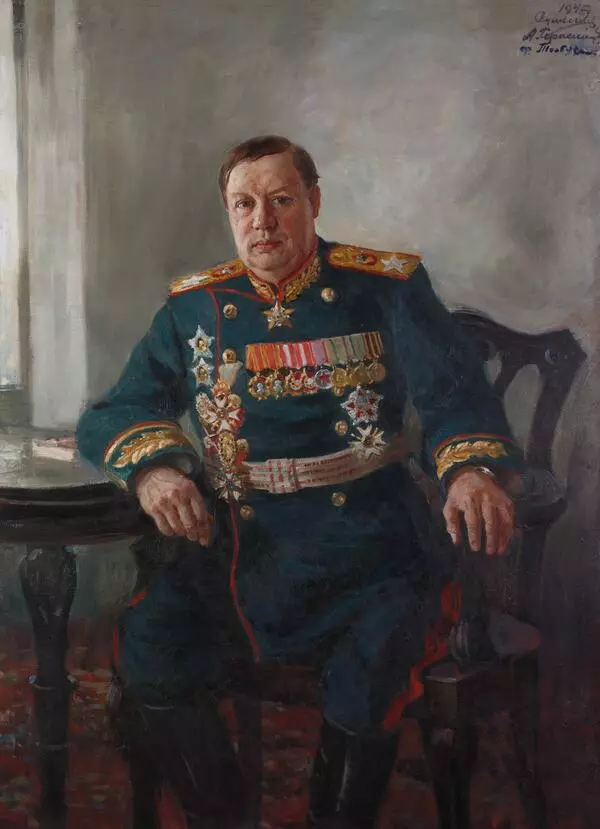Alexander Mikhailovich Gerasimov was a Soviet painter, one of the representatives of socialist realism, and the first president of the USSR Academy of Arts. He was also the People’s Artist of the USSR, Doctor of Arts, and winner of four Stalin Prizes (in 1941, 1943, 1947, and 1949). By 1931, Alexander Gerasimov had already become a prominent member of the art scene of Moscow and one of the main figures in the USSR Academy of Arts. The artist received the Order of Lenin for his painting “Lenin on the Podium” and created a series of works dedicated to the Red Army commanders.
The genre of self-portrait exists in all kinds of fine arts and has been used as a means of introspection. As early as ancient Egypt, artists started creating self-portraits using a mirror. Almost every great master painted a self-portrait, and some even specialized in this genre.
Alexander Gerasimov painted a portrait of himself in an academic manner, contrasting a white shirt against a classic dark color palette and adding a bow tie — his invariable and much-cherished attribute. The self-portrait shows a youthful, striking and good-looking middle-aged man. Alexander Gerasimov was of medium height and had a strong build and lush hair. In this self-portrait, Gerasimov depicts himself as important-looking and full of strength and energy: the posture and the look of a successful person, the suit, brushes, and palette were all rather characteristic of the artist. The artist holds the brush in his right hand. His strong arms betray just how much effort the work of an artist truly requires. It seems as if he wants to show the viewers how magnificent paintings are created and how much inspiration they require to come into existence. The image of a pipe is present in many self-portraits and photographs of the artist.
The painter also created the well-known portrait of the ballerina Olga Vasilyevna Lepeshinskaya, who later wrote in her letter dated January 25, 1997:
The genre of self-portrait exists in all kinds of fine arts and has been used as a means of introspection. As early as ancient Egypt, artists started creating self-portraits using a mirror. Almost every great master painted a self-portrait, and some even specialized in this genre.
Alexander Gerasimov painted a portrait of himself in an academic manner, contrasting a white shirt against a classic dark color palette and adding a bow tie — his invariable and much-cherished attribute. The self-portrait shows a youthful, striking and good-looking middle-aged man. Alexander Gerasimov was of medium height and had a strong build and lush hair. In this self-portrait, Gerasimov depicts himself as important-looking and full of strength and energy: the posture and the look of a successful person, the suit, brushes, and palette were all rather characteristic of the artist. The artist holds the brush in his right hand. His strong arms betray just how much effort the work of an artist truly requires. It seems as if he wants to show the viewers how magnificent paintings are created and how much inspiration they require to come into existence. The image of a pipe is present in many self-portraits and photographs of the artist.
The painter also created the well-known portrait of the ballerina Olga Vasilyevna Lepeshinskaya, who later wrote in her letter dated January 25, 1997:

